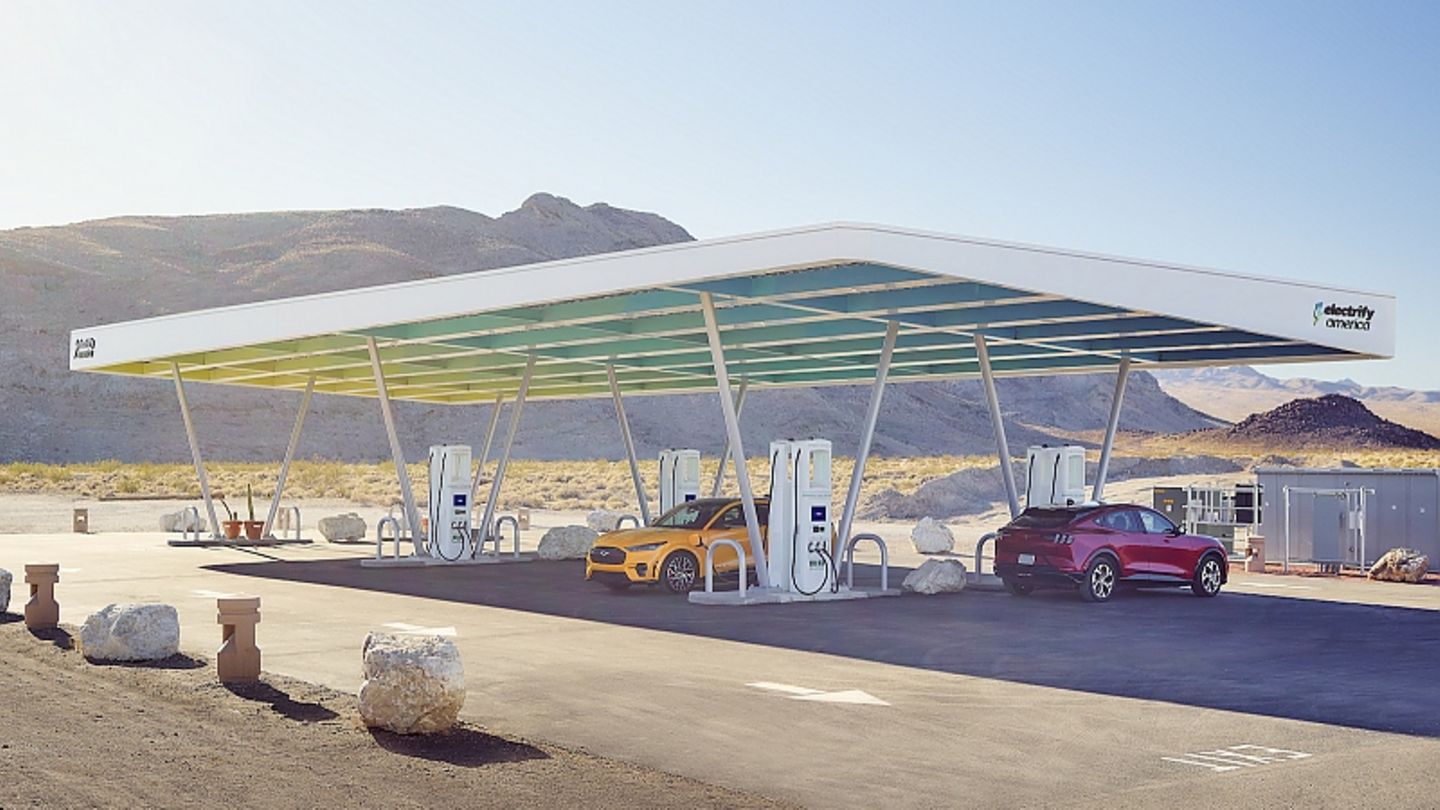Nowhere in the world have more Tesla models been sold than in the USA, and the electric wave is now getting rolling at other automakers too. The charging network Electrify America should help in particular.
Most American customers of an electric car currently charge it at home and then primarily at a normal socket. That means endless loading times and is therefore anything but convenient. The number of public charging stations varies greatly depending on the region, and in many states there are currently little more than a few superchargers and alibi charging stations in front of public buildings. That should change in the next few years. After the Democrats with President Joe Biden took over the political regime, there is much more pressure in terms of electromobility. A widespread charging network should ensure that more and more Americans are interested in electromobility and switch to an electric vehicle across all states. In addition, there are electric volume models, which, in addition to the Tesla Model 3 and Model X, are intended to appeal to the masses.
The company Electrify America, which originally emerged from the Volkswagen Group’s diesel scandal, is primarily responsible for the public charging network. In the context of the legal dispute, Volkswagen committed to invest two billion US dollars so that the company could provide an appropriate charging infrastructure. At the end of last year, the Reston / Virginia-based company had set up 500 charging stations and around 2,200 charging stations across the country – not much for a large country like the USA. But the expansion is making great strides – not least due to pressure from Joe Biden. At the end of this year there should be 800 stations and more than 3,500 charging points. 1,800 charging parks and 10,000 charging stations are planned across the United States by 2025.
“We have decided to double our current charging infrastructure in North America over the next four years to meet the demand for the rapid growth of electric vehicles expected by virtually all automakers and to help make EV adoption more accessible and attractive than ever.” said Giovanni Palazzo, President and Chief Executive Officer of Electrify America. “With this commitment we support the plans of the major automakers and the governments of the United States and Canada to promote the transition to an electric mobility system.”
Small and medium-sized charging parks are currently emerging at the malls, shopping centers and outlets that are so popular in the USA, where Americans can easily charge their vehicles while shopping. The other charging stations are to be set up in large parking lots and in multi-storey car parks. In contrast to Europe, Americans do not only shop much longer and longer than we know in our part of the world, and not just on weekends. With the DC fast chargers, we can give vehicles a lot of strength again before we go back home.
Electrify America’s charging network currently offers a range from 50 to 350 kW, with most charging stations supposed to achieve speeds of more than 150 kW. In order to survive against the Tesla charging network with its superchargers, not only the charging speed but also the locations should be competitive. Similar to Ionity or EnBW in Germany and Europe, Electrify America also has corresponding charging tariffs, whereby the manufacturers of some vehicles have agreed on free charging. For example, anyone who has secured one of the Lucid Airs, which will be available from December, charges completely free of charge in the Electrify America charging network for the first three years – a copy of the old Tesla system, so the Tesla models could also recharge for free on the superchargers. The situation is similar with the models from Mercedes, Audi, Hyundai, Kia, Volkswagen and Volvo – even their new electric models don’t pay a cent in the Electrify America charging network for at least two years when they plug it in.
The billing of normal charging is done either by charging time or by the amount of energy that has been refilled. Currently, a kilowatt-hour costs $ 0.43 for third-party customers and $ 0.31 for members, who incur an additional monthly fee of $ 4, but which is often paid for by the automaker. If billed by duration, it is usually three cents per minute or 40 cents after a period of ten minutes.
I am a 24-year-old writer and journalist who has been working in the news industry for the past two years. I write primarily about market news, so if you’re looking for insights into what’s going on in the stock market or economic indicators, you’ve come to the right place. I also dabble in writing articles on lifestyle trends and pop culture news.




